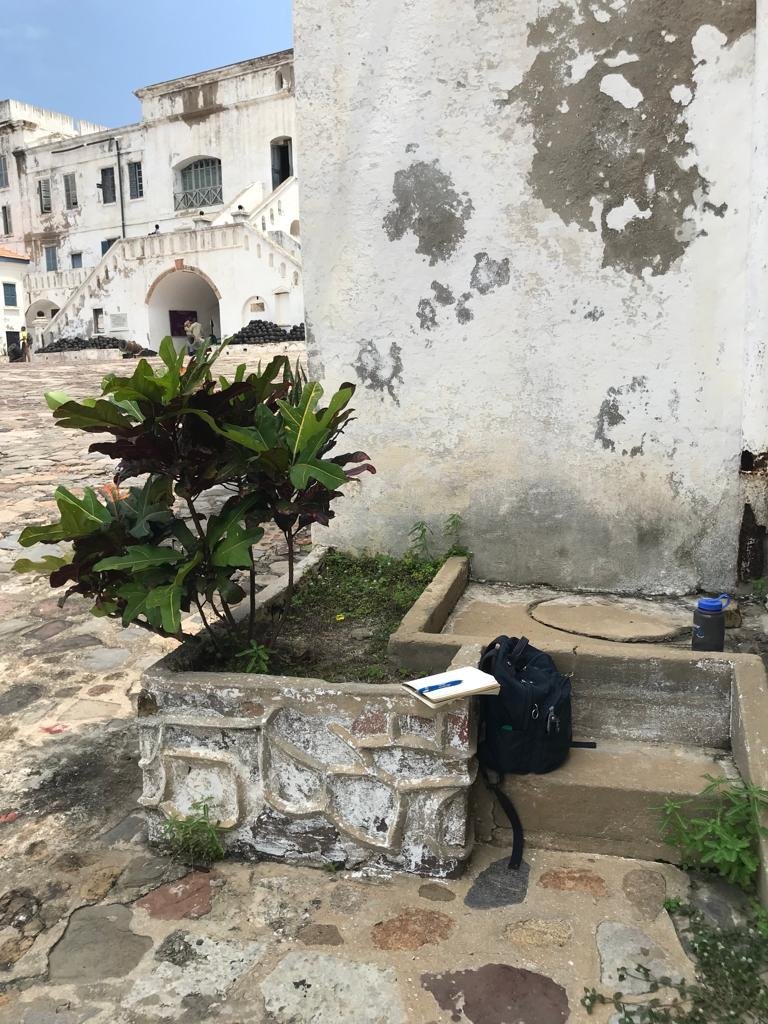At Cape Coast we spread out to write in silence for half an hour. I find a small step in a narrow strip of shade against a high wall. A variegated plant is growing beside me. Swallows are swooping. The door of no return is within sight. Waves are pounding against the seawall. Intense sunlight fills the vast courtyard overlooking the Atlantic Ocean. It is noon. I think of the sheer audacity of the European colonizers to erect such an enormous imposing structure that out-scales the local buildings hundreds-fold, and the audacity of them to do this on other peoples’ shores. Even the equatorial sun did not deter them. The sharp heat, the blinding light, the pounding surf did not keep them from erecting this structure of dominance, exploitation and atrocity. I hear heavy loud machinery moving huge boulders into place for a massive seawall intended to protect this edifice from the rising seas of climate change. I sense some irony and symbolism in that. Near my feet I notice a rosette of green growth emerging from a crack in the impossibly thick stone floor. The plant speaks to me of all the human resilience and brilliance and determination and resourcefulness which have been stolen and squandered - and which have also survived and want to thrive - on both sides of the Atlantic. And I recognize how deep African human roots must be.
By Elizabeth Updike Cobblah, retired Art teacher Fenn School , Maynard MA


